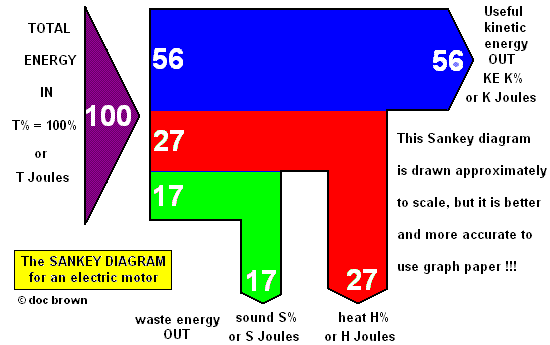Sankey diagrams show the energy transfers in a system:


- The total energy transferred into the system is shown as an arrow
- This arrow splits into narrower arrows showing other transfers
The width of the arrow is drawn to scale to show the amount of energy. Sankey diagrams show that the total energy transferred into a system is equal to the useful energy transferred plus the energy dissipated or 'wasted'. This confirms that energy is conserved.
Comments
No comments have yet been made